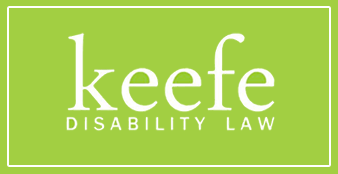 Deep vein thrombosis occurs when blood clots form in one or more of your veins. Typically, these blood clots occur in the legs. For some people, deep vein thrombosis causes no symptoms. Other people, however, suffer from swelling and pain in their legs and potentially life-threatening complications.
Deep vein thrombosis occurs when blood clots form in one or more of your veins. Typically, these blood clots occur in the legs. For some people, deep vein thrombosis causes no symptoms. Other people, however, suffer from swelling and pain in their legs and potentially life-threatening complications.
If a blood clot breaks loose from a vein, then it can become stuck in various parts of the body, including the brain, lungs, and heart, and it may cause an embolism. Deep vein thrombosis can also increase the risk of stroke. Both stroke and embolisms are potentially life-threatening conditions.
Deep Vein Thrombosis Diagnosis
Before you receive Social Security disability benefits for deep vein thrombosis, you must show that you were diagnosed with the condition. Doctors diagnose deep vein thrombosis with x-rays, blood tests, or ultrasounds, or by measuring the blood flow through the legs.
Your condition should be diagnosed and documented by a qualified medical professional. Many people with deep vein thrombosis can continue to work. For them, blood-thinning medications or surgery may control their condition. These people are not eligible for Social Security disability benefits.
However, some people with deep vein thrombosis are advised not to work, or they develop complications that prevent them from working. These people may qualify for Social Security disability benefits.
Social Security Disability Eligibility for Deep Vein Thrombosis
After you are diagnosed, you may seek Social Security disability benefits if you meet the requirements in the Social Security Administration’s Listing of Impairments, if your condition is equal in severity to another listing in the Listing of Impairments, or if you can’t work for at least 12 months or are you are likely to die from your condition.
Section 4.11 of the Listing of Impairments
The Social Security Administration includes chronic venous insufficiency, a complication of deep vein thrombosis, in its Listing of Impairments. Chronic venous insufficiency occurs when deep vein thrombosis damages the veins in your legs. You may qualify for Social Security disability benefits for chronic venous insufficiency pursuant to Section 4.11 of the Listing of Impairments if you have incompetency or obstruction of the deep venous system in your leg(s) and one of the following is true:
- You have extensive brawny edema involving at least two-thirds of the leg between the ankle and knee or the distal one-third of the lower extremity between the ankle and hip.
- You have superficial varicosities, stasis dermatitis, and either recurrent ulceration or persistent ulceration that has not healed following at least three months of prescribed treatment.
Other Ways to Qualify for Social Security Disability Benefits
Some people are diagnosed with deep vein thrombosis and can’t work. Yet, they don’t meet the requirements in the Listing of Impairments. They may still qualify for Social Security disability benefits, however, if they can prove that:
- Their deep vein thrombosis is equal in severity to another listing in the Listing of Impairments. The Blue Book Listing of Impairments is not meant to be a completely inclusive list of medical conditions that qualify for Social Security disability benefits. Other conditions, not included in the Blue Book, may be just as disabling. Therefore, if you can prove that your deep vein thrombosis is equal in severity to any other listing, then you are eligible for Social Security disability benefits.
- They can’t work for at least 12 months, or their condition is likely to result in death. If you can prove that you can’t do the work that you did before your diagnosis (or any other work for at least 12 months) or that you are likely to die from deep vein thrombosis, then you may be eligible for Social Security disability benefits.
Remember, you just need to prove eligibility for Social Security disability one way to get the benefits that you deserve.
Don’t Take a Risk With Your Social Security Disability Benefits
Not everyone with deep vein thrombosis qualifies for Social Security disability benefits. Instead, you must prove to the Social Security Administration that you qualify for benefits in one of the ways described above. A simple error on the application or a missing piece of documentation can prevent you from getting the benefits you deserve. Don’t take this chance with your financial future. Instead, contact the experienced New England Social Security disability lawyers of Keefe Disability Law today to learn more about your rights and to protect the disability benefits you’ve earned.
Are You Looking for a Social Security Disability Attorney in Boston, MA?
If you are looking to apply for social security disability, you need to speak with an experienced social security disability lawyer as soon as possible. Please contact us online or call our Natick Office directly at 508.283.5500 to schedule your free consultation.
| Related Links: |

